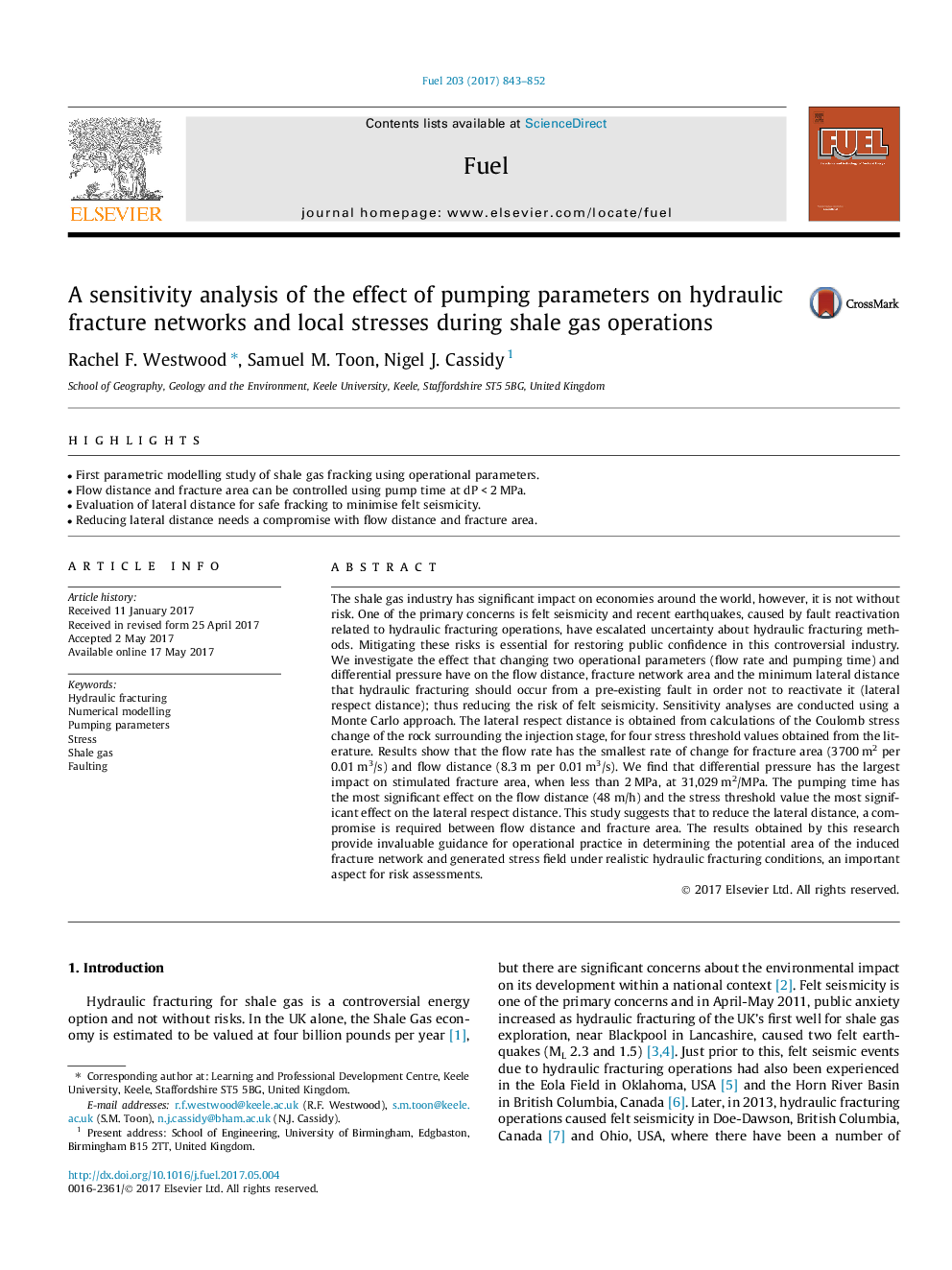| کد مقاله | کد نشریه | سال انتشار | مقاله انگلیسی | نسخه تمام متن |
|---|---|---|---|---|
| 6474470 | 1424961 | 2017 | 10 صفحه PDF | دانلود رایگان |
- First parametric modelling study of shale gas fracking using operational parameters.
- Flow distance and fracture area can be controlled using pump time at dPÂ <Â 2Â MPa.
- Evaluation of lateral distance for safe fracking to minimise felt seismicity.
- Reducing lateral distance needs a compromise with flow distance and fracture area.
The shale gas industry has significant impact on economies around the world, however, it is not without risk. One of the primary concerns is felt seismicity and recent earthquakes, caused by fault reactivation related to hydraulic fracturing operations, have escalated uncertainty about hydraulic fracturing methods. Mitigating these risks is essential for restoring public confidence in this controversial industry. We investigate the effect that changing two operational parameters (flow rate and pumping time) and differential pressure have on the flow distance, fracture network area and the minimum lateral distance that hydraulic fracturing should occur from a pre-existing fault in order not to reactivate it (lateral respect distance); thus reducing the risk of felt seismicity. Sensitivity analyses are conducted using a Monte Carlo approach. The lateral respect distance is obtained from calculations of the Coulomb stress change of the rock surrounding the injection stage, for four stress threshold values obtained from the literature. Results show that the flow rate has the smallest rate of change for fracture area (3700Â m2 per 0.01Â m3/s) and flow distance (8.3Â m per 0.01Â m3/s). We find that differential pressure has the largest impact on stimulated fracture area, when less than 2Â MPa, at 31,029Â m2/MPa. The pumping time has the most significant effect on the flow distance (48Â m/h) and the stress threshold value the most significant effect on the lateral respect distance. This study suggests that to reduce the lateral distance, a compromise is required between flow distance and fracture area. The results obtained by this research provide invaluable guidance for operational practice in determining the potential area of the induced fracture network and generated stress field under realistic hydraulic fracturing conditions, an important aspect for risk assessments.
Journal: Fuel - Volume 203, 1 September 2017, Pages 843-852
